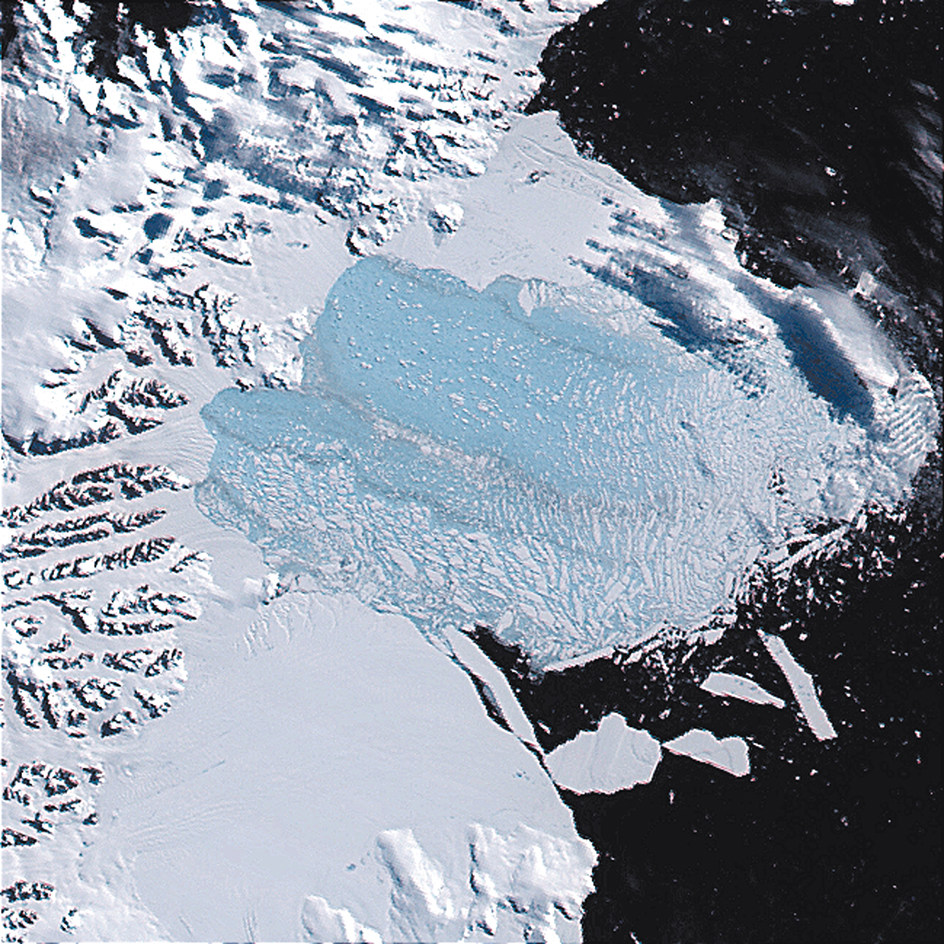Greenhouse effect is a warming of the lower atmosphere and surface of a planet by a complex process involving sunlight, gases, and atmospheric particles. On Earth, the greenhouse effect began long before human beings existed. However, human activity has added to the effect. The amounts of heat-trapping atmospheric gases, called greenhouse gases, have increased since the mid-1800’s, when modern industry became widespread. Since that time, the average temperature of Earth’s surface has also risen. Human beings have contributed to this rise in temperature by altering the carbon cycle, the movement and storage of carbon around Earth, as well as by adding greenhouse gases to the atmosphere. The greenhouse effect is so named because the atmosphere traps heat from the sun much like the clear roof and walls of a greenhouse.
The natural greenhouse effect.
The atmosphere reflects about 30 percent of the energy in incoming sunlight and absorbs another 30 percent. The remaining 40 percent or so reaches Earth’s surface. The surface reflects about 15 percent of the solar energy back toward space. The remaining energy heats the lands and seas. The warmed surfaces then send most of the heat back into the atmosphere, chiefly as infrared rays, as rising warmed air, and in evaporated water. Infrared rays are like light waves but invisible to the human eye.
When the rays from the lands and seas strike the greenhouse gases and particles in the atmosphere, those substances absorb the rays. As a result, the gases and particles are heated. They then send out infrared rays of their own. Some of the rays go into space. The remainder radiate back toward Earth’s surface, adding to the warming of the surface layer of air. Without the natural greenhouse effect, the average temperature of Earth’s surface would be about 59 degrees Fahrenheit (33 degrees Celsius) colder than it is now.
The chief greenhouse gases are made up of atoms of carbon (C), hydrogen (H), and oxygen (O). These gases are water vapor (H2O), carbon dioxide (CO2), methane (CH4), and ozone (O3). The greenhouse particles include cloud droplets, soot, and dust. Water vapor accounts for almost 70 percent of Earth’s natural greenhouse effect.
Increases in greenhouse gases.
Since the mid-1800’s, the amounts of greenhouse gases in Earth’s atmosphere have risen. Most of the increase has been due to human activities—chiefly the burning of fossil fuels (coal, oil, and natural gas) and the clearing of land. Fossil fuels contain carbon, and burning them creates carbon dioxide. Trees and other plants absorb the gas through the process of photosynthesis. As land is cleared and forests are cut down or burned, CO2 once stored in the plants is released back into the air.
The average temperature of Earth’s surface has increased by about 1.8 Fahrenheit degrees (1 Celsius degree) since the mid-1800’s. Most of the temperature rise happened from the mid-1900’s to the 2000’s. Scientists have shown that human-caused increases in greenhouse gas concentrations are probably responsible for most of the warming, called global warming. CO2 ranks as the gas that has produced the most increase in temperature. Other processes, known as climate feedbacks, can increase or reduce the greenhouse effect. Climate feedbacks include how clouds behave in a warmer climate, the ability of increased particles in the air to absorb heat, the effects of CO2 on the oceans, and the response by organisms to the extra CO2 that human beings produce. Researchers have estimated that Earth’s average surface temperature will rise another 2.0 to 11.5 Fahrenheit degrees (1.1 to 6.4 Celsius degrees) by 2100. The range of estimates is due mainly to the uncertainty of how climate feedbacks work.
Global warming alters the ecology of much of Earth. For example, it changes rainfall patterns, melts enough polar ice to raise the sea level, harms ocean life, and leads to shifts in plant and animal populations.

Studying the greenhouse effect.
Researchers use computers to study how greenhouse gases may affect surface temperature. The computers manipulate mathematical models, sets of equations that describe relationships between changeable factors. Scientists use such models with data on how these factors change over time to produce simulations of how the climate would vary. Researchers have found that only simulations that take into account human activities can reproduce the changes in temperature measured since the mid-1900’s.
Scientists have also examined evidence from the distant past. Cores of ice drilled from great depths in Antarctica provide a record for the past 650,000 years. During those years, the climate warmed and cooled several times. Researchers analyzed the substances trapped in the ice when it formed. During the cooler periods, the atmosphere contained less CO2 and methane than during the warmer periods. Scientists have also noted that the levels of CO2 and methane in the atmosphere in the 2000’s far exceeded the ranges from the distant past.
See also Carbon footprint; Gasoline engine (Air pollution controls); Global warming; National park (Changes in the environment).
